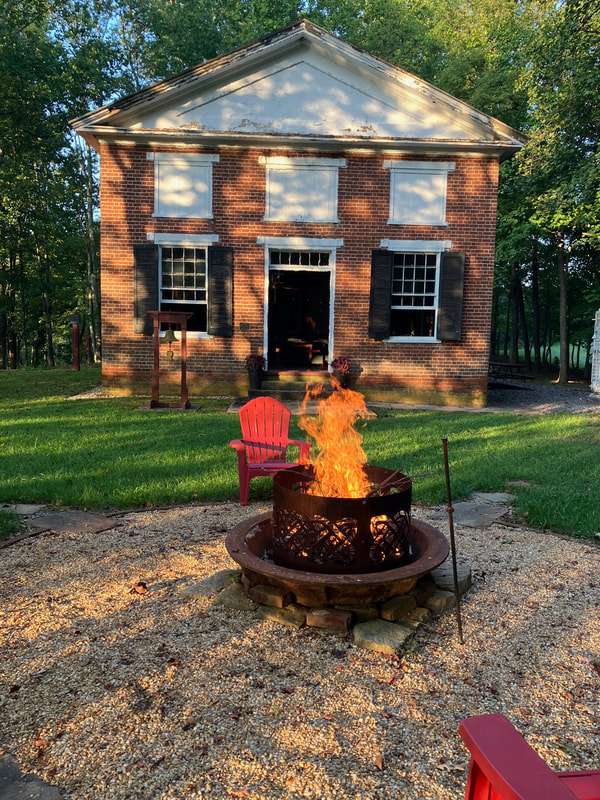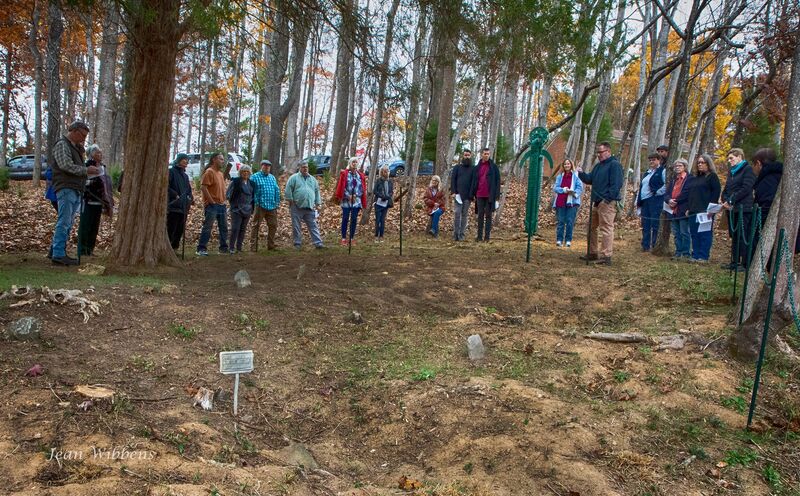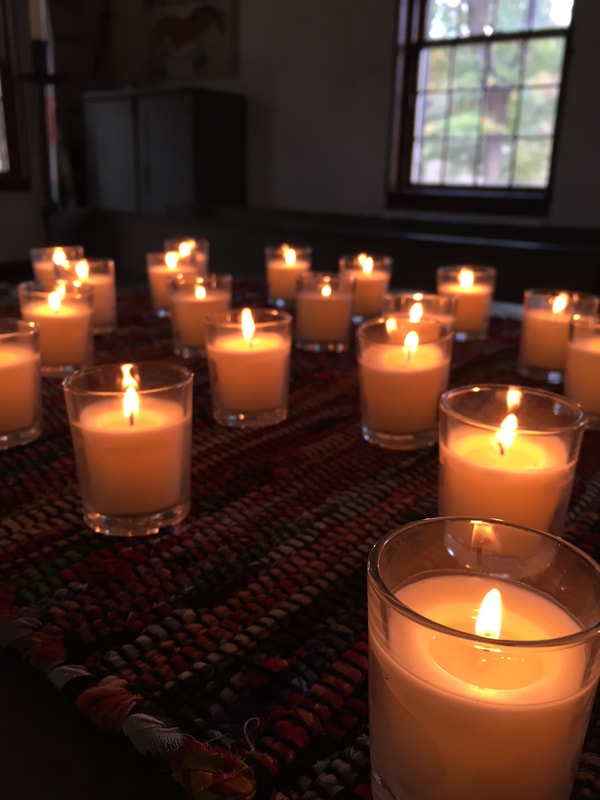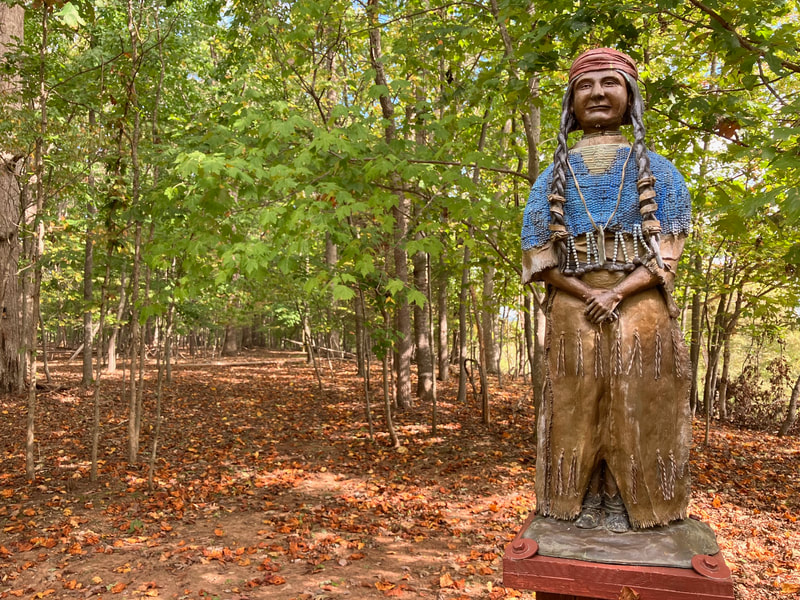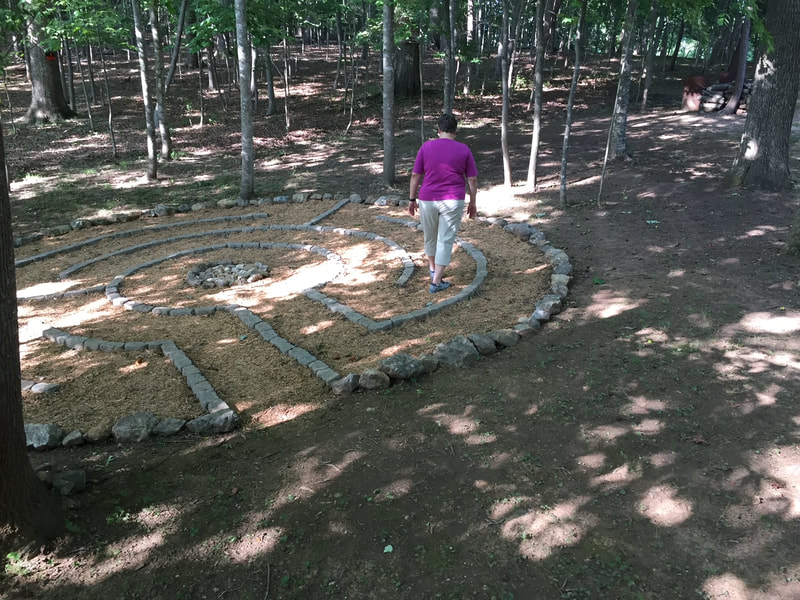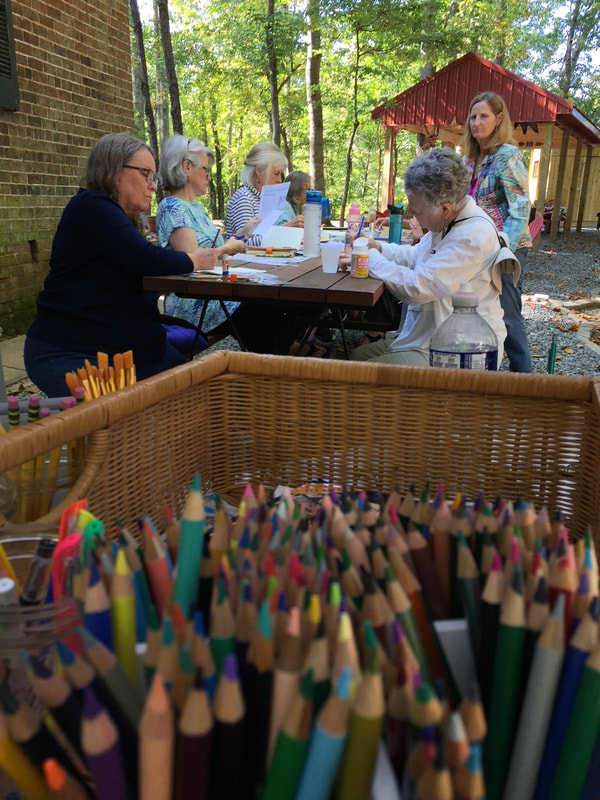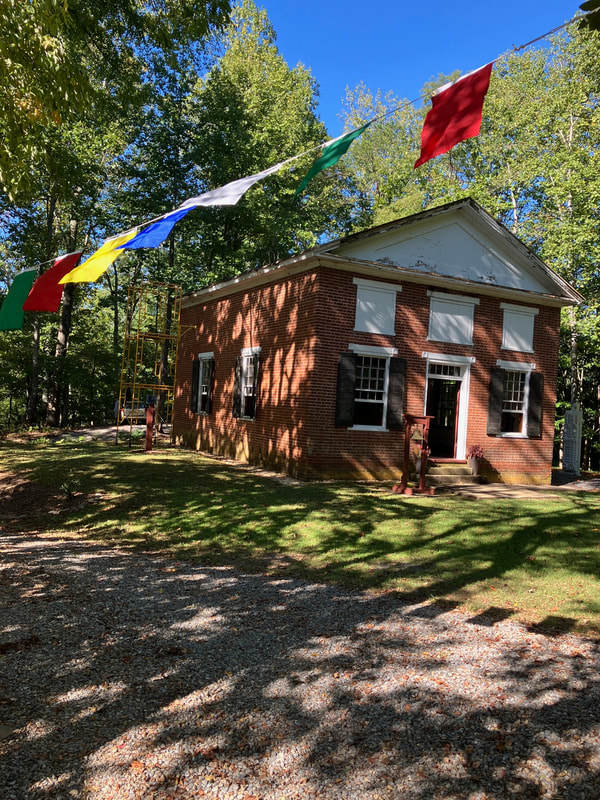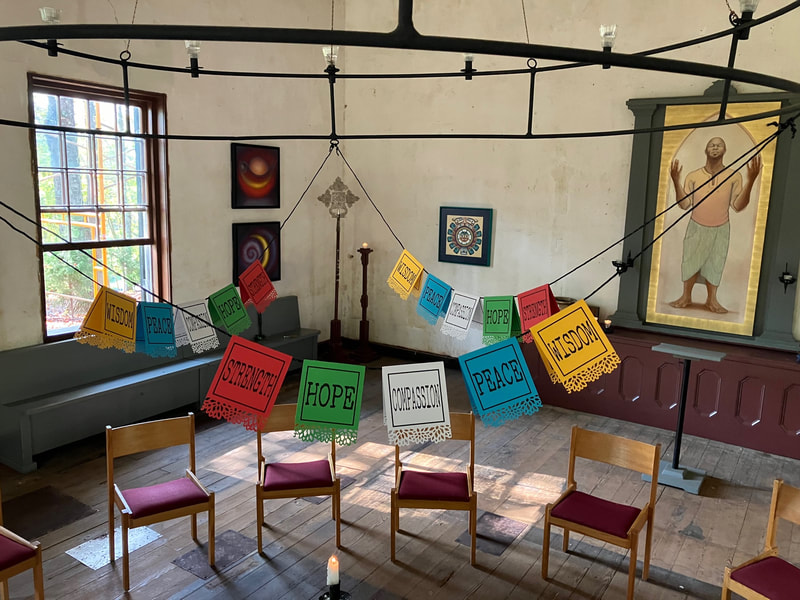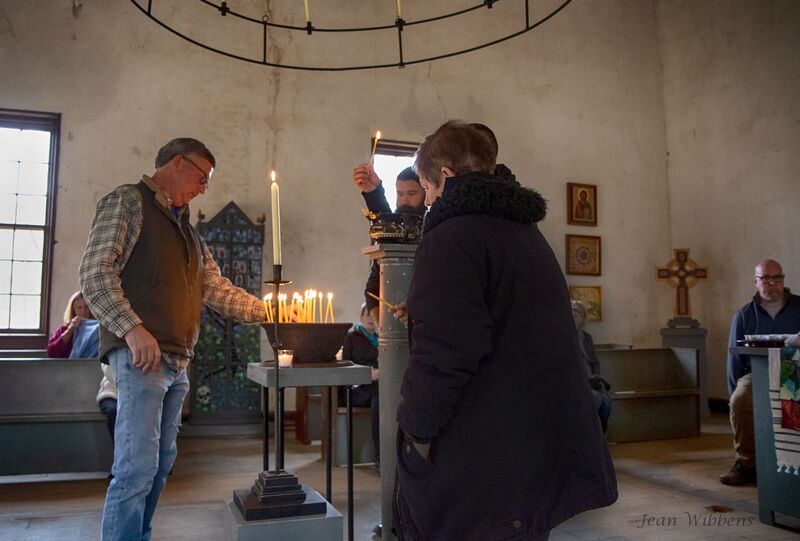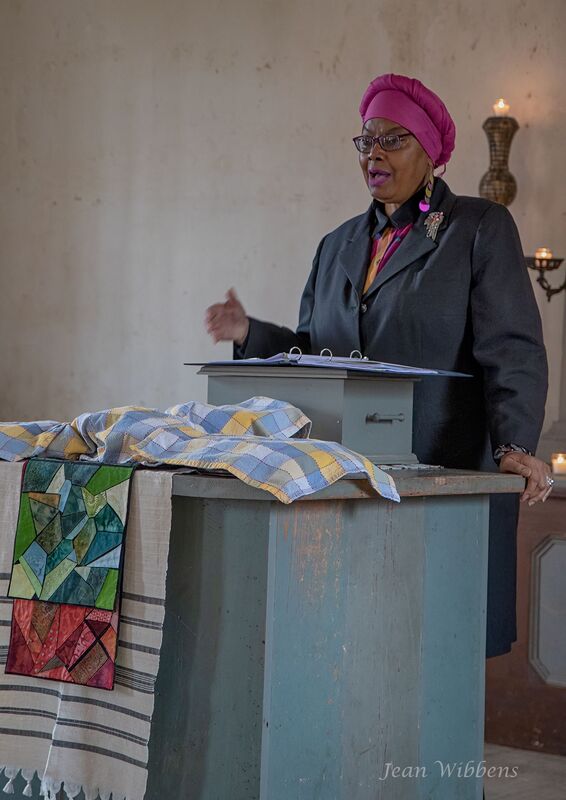The Thomas Chapel Project
|
Portiuncula Guild, Inc. is currently working with the Bedford Historical Society, Inc. and the Virginia Department of Historic Resources to restore and breathe new life into this historic Bedford landmark.
The desire to restore Thomas Chapel as a place for religious assembly, retreat, meditation, and prayer is rooted in the growing awareness that love, mindfulness, and the search for truth are ultimately deeply anchored in a ministry of imagination and pilgrimage. The work of renewing this local landmark is also rooted in the growing hope that creative folks and spiritual seekers of all denominations and all faiths can find common values and in turn create the possibility of conducting a dialogue with one another to build mutual respect and charity. Because the creative life and the intentional spiritual journey changes you, grows community, fosters social change, and shapes our world for the better. |
The Historic Chapel
In 1844 local landowners Solomon and Lucinda Williamson gave the land on which Thomas Chapel now sits. The chapel’s Greek-temple form and precise brickwork are an offspring of Virginia’s Classical Revival tradition fostered by Thomas Jefferson. Local builders adapted the building’s form from readily available’ pattern books and availability of locally sourced materials. Thomas Chapel shows remarkable similarity to other Bedford landmarks like St. Stephen’s Episcopal Church erected in Forest (1824) and the Bedford Historic Meeting House in the Town of Bedford (1838).
Thomas Chapel has been unused since 1972 when the Chapel’s last trustees deeded the structure and 1.4 acres to the Bedford Historical Society, Inc. to preserve and restore as a historic shrine. The trustees’ wish was that someday the chapel with its historically significant architecture, its wonderful rural location and vistas, and the chapel’s local cultural contributions would be remembered and celebrated and that the chapel would find a new use. In 2004 the chapel was listed in Virginia Landmarks and The National Register of Historic Places. The Bedford Historical Society, Inc. has maintained the structural integrity of the building for the past half-century.
The 30 foot by 40 foot chapel is a sturdy construction. The brick walls are 16 inches thick and the floor is supported by unhewn chestnut log floor joists covered with sash sawn floorboards. The bricks for the chapel were made and kilned on site, the timber harvested and milled locally, and the building constructed by local craftsmen. The chapel was originally heated by a wood stove (and later an oil furnace) and was wired for electricity in 1939. The chapel has never had running water.
The space has been essentially unaltered since it was built, with one notable exception. Originally, the chapel had a rear “slave” balcony accessible through a side door and interior stairwell. Given that all but one of the founding trustees were slave owners, the labor, skill, and craftsmanship of local enslaved persons was probably instrumental in the construction and design of the chapel. Likely, enslaved persons were members of the founding congregation.
The 30 foot by 40 foot chapel is a sturdy construction. The brick walls are 16 inches thick and the floor is supported by unhewn chestnut log floor joists covered with sash sawn floorboards. The bricks for the chapel were made and kilned on site, the timber harvested and milled locally, and the building constructed by local craftsmen. The chapel was originally heated by a wood stove (and later an oil furnace) and was wired for electricity in 1939. The chapel has never had running water.
The space has been essentially unaltered since it was built, with one notable exception. Originally, the chapel had a rear “slave” balcony accessible through a side door and interior stairwell. Given that all but one of the founding trustees were slave owners, the labor, skill, and craftsmanship of local enslaved persons was probably instrumental in the construction and design of the chapel. Likely, enslaved persons were members of the founding congregation.
Years of Witness and Change
The chapel was born amid profound theological and social change and controversy. Just months after the national conference in which Methodist Episcopal Church split between northern and southern states largely over the issue of slavery, Virginia Methodists authorized the building of Thomas Chapel. The congregation would soon witness a devastating war that would forever change the lives of both its white and black members. As a result of the war, the Methodist church would split into many separate denominations largely based on race or issues of congregational polity. Attempts were made throughout the 20th century to bring the various Methodist denominations back together … becoming The Methodist Church USA in 1939 and The United Methodist Church in 1968. Thomas Chapel’s history reflects these larger national and denominational changes.
During its 128-year history as an active congregation, Thomas Chapel (and American Methodism in general) witnessed many positive and exciting changes in their practice of worship and the sacraments, the introduction of pastoral leadership and governance by the laity, women clergy, and active engagement in a variety of civil and human rights issues. The United Methodist Church provided both the witness and leadership to make Christianity’s message relevant in the 20th century.
Alas, Thomas Chapel’s congregation’s energy refocused elsewhere for a variety of reasons. The chapel’s rural isolation, a lack of amenities and programming, a struggle to maintain pastoral leadership, aging membership, the cost of maintenance, and changes to ways Methodists came to understand church and worship all worked in tandem to foster a decline in both participation and creativity. While these cultural shifts were certainly reasons for the decline of this once vital congregation, the loss of this once vibrant congregation does not have to be inevitable or irreversible.
Alas, Thomas Chapel’s congregation’s energy refocused elsewhere for a variety of reasons. The chapel’s rural isolation, a lack of amenities and programming, a struggle to maintain pastoral leadership, aging membership, the cost of maintenance, and changes to ways Methodists came to understand church and worship all worked in tandem to foster a decline in both participation and creativity. While these cultural shifts were certainly reasons for the decline of this once vital congregation, the loss of this once vibrant congregation does not have to be inevitable or irreversible.
A Renewed Purpose
The desire to restore Thomas Chapel as a place for religious assembly, retreat, meditation, and prayer is rooted in the growing awareness that love, mindfulness, and the search for truth are ultimately deeply anchored in a ministry of imagination and pilgrimage.
The work of renewing this local landmark is also rooted in the growing hope that creative folks and spiritual seekers of all denominations and all faiths can find common values and in turn create the possibility of conducting a dialogue with one another to build mutual respect and charity. Because the creative life and the intentional spiritual journey changes you, grows community, fosters social change, and shapes our world for the better.
The work of renewing this local landmark is also rooted in the growing hope that creative folks and spiritual seekers of all denominations and all faiths can find common values and in turn create the possibility of conducting a dialogue with one another to build mutual respect and charity. Because the creative life and the intentional spiritual journey changes you, grows community, fosters social change, and shapes our world for the better.
|
Visiting Thomas Chapel
Thomas Chapel is in a rural and rustic setting and we are slowly improving the grounds and building. When you visit you should expect walking on some uneven ground and several steps with no handrail. There is no electricity and no running water onsite. There is ample parking on a gravel lot, a covered pavilion and an outbuilding with a composting toilet available during events. The grounds at Thomas Chapel are open year round to visitors. To be notified of regularly scheduled events at the Chapel, please sign up for our newsletter. If you would like a tour of the building or have an idea for a special event at the Chapel, please contact us by email. |
|

